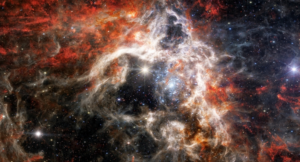Instead of a single Big Bang that brought the universe into existence billions of years ago, cosmologists are starting to suspect there may have been a second transformative event that could explain the vast abundance of dark matter in the universe.
As New Scientist reports, our recent glimpses into early moments of the universe, just millions of years after the Big Bang, could allow us to gain new insights into this “dark” Big Bang, which could solve a conundrum that’s been plaguing astronomers for almost half a century.
Dark matter is the hypothetical form of matter that doesn’t interact with light or electromagnetic fields in any way, yet appears to make up roughly 27 percent of the known universe.
Denisovan genes responsible for modern depression, says study
Astronomers have long attempted to explain why clusters of galaxies move in ways that our existing Standard Model of physics can’t account for. To make the math work, the dominant explanation is that there’s a bunch of stuff out there that we can’t see.
Despite our best efforts, however, we’re still unable to observe this matter directly. Now, some researchers are wondering whether a second big bang might have brought the exotic substance into existence after the regular matter we’re accustomed to dealing with.
Continue here: Futurism
Ask me anything
Explore related questions





